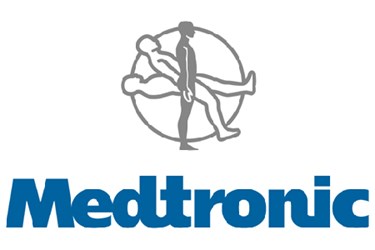Medtronic's Infuse Bone Graft Approved For Two Additional Indications

The FDA has approved an expanded list of indications for Medtronic’s Infuse Bone Graft and is currently reviewing additions to the product’s labeling. Medtronic announced that it will market the product for use with certain spine implants for oblique lateral interbody fusion (OLIF) and anterior lumbar interbody fusion (ALIF) procedures starting in early 2016.
Infuse Bone Graft is a genetically engineered version of a protein already found in the body that is infused into an absorbable collagen sponge. When placed at the implant site, the sponge works as a scaffold as the protein promotes new bone growth, and once bone is regrown, the sponge is absorbed into the body. Procedures performed with the product circumvent the additional pain and risk of traditional grafts harvested from the patient’s hip bones.
Medtronic announced that the expanded labeling would include indications for procedures performed with certain spine implants made from polyether ether ketone (PEEK). In the future, the Infuse Bone Graft may be used with certain sizes of the PEEK Perimeter implant for OLIF51 procedures at a single level between L5-S1 and for ALIF procedures at a single level from L2-S1, as well as for OLIF25 procedures using the PEEK Clydesdale Implant at a single level from L2-L5.
OLIF procedures were developed to give surgeons lateral access to the spine without compromising the psoas muscle or the iliac crest, and without requiring surgical teams to flip the patient’s position during surgery, reported Becker’s Spine Review. According to Kamal Woods, CFO of Advances Neurosurgery Associates, the approach allows surgeons to work at a more comfortable posture and reduces hospitalization times for patients.
Peter Whang, professor of orthopedics at Yale School of Medicine, commented that the Infusion Bone Graft is reliable in achieving solid arthrodesis. “In particular, I believe that the proven osteoinductive properties of Infuse Bone Graft are particularly beneficial when used in conjunction with PEEK interbody spacers and the less invasive OLIF technique, which circumvents the psoas muscle and minimizes disruption of the surrounding soft tissues and neural structures.”
The Infuse Bone Graft has come under fire over the past few years, with several plaintiffs filing lawsuits alleging — among other things — that the graft was being used for off-label indications. Medtronic agreed to settle an estimated 950 claims for $22 million in 2014.
Ken Powel, CEO of General Mills, who serves on Medtronic’s board, told Twin Cities Business that he credited Medtronic CEO Omar Ishrak for meeting the challenge head-on. Following criticism, said Powell, Ishrak turned over all of Medtronic’s research and data to a third party, Yale University, to investigate.
“That was a perfect example of how Omar faces problems,” said Powell. “It was a very transparent response.”
Doug King, president of Medtronic’s Spinal business, remarked in the press release, “We believe in the safety and effectiveness of the INFUSE bone graft and reiterate our continued commitment to the product.”
